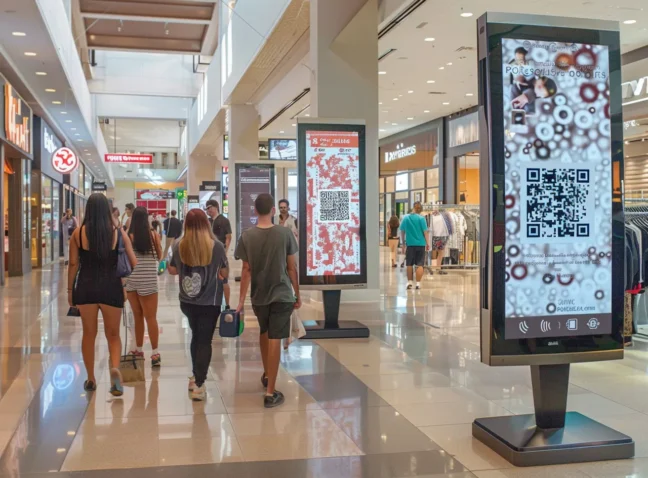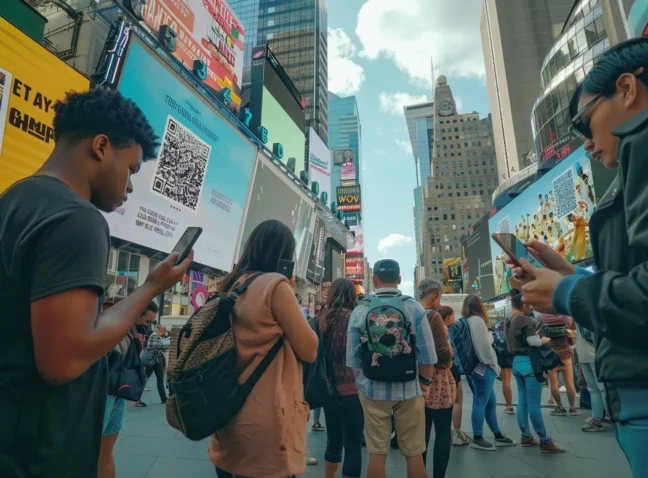Google Chrome, the world’s leading web browser, offers an advanced digital experience that millions have come to rely on for their daily internet activities. Among its myriad of features, the ability to generate QR codes directly from the browser stands out as a testament to its adaptability and user-centric design. This functionality bridges the gap between the digital and physical worlds, allowing for instantaneous sharing of web content in a tap. As we delve deeper into the capabilities of QR codes within Chrome, you’ll discover how this feature can transform your online interactions, making the sharing of information as simple as a glance. Let’s embark on a journey to master this indispensable tool, advancing your digital navigation like never before.
Why Use QR Codes for Chrome: Boost Your Online Presence
In today’s digital landscape, QR Codes have seamlessly integrated into browsing experiences, particularly with leading browsers like Google Chrome. This functionality simplifies content sharing, catering to both personal and professional needs. With QR codes, information dissemination becomes swift and efficient, aligning perfectly with the demand for seamless connectivity in our modern world.
QR Codes for Google Chrome: Simplifying Content Sharing in the Digital Age
Google Chrome sets itself apart by seamlessly integrating QR code functionality directly within the browser interface. With just a few clicks, users can generate a QR code for the current webpage they’re viewing, enhancing accessibility and convenience. This user-friendly feature, accessible via the ‘share’ icon, underscores Chrome’s commitment to improving the browsing experience. The statistics speak volumes: QR code scanning on Google Chrome has surged by 30% in the past year, indicating a growing trend towards QR code adoption. Businesses are increasingly recognizing the value, with a 25% rise in QR code usage on Chrome. Additionally, Chrome users are 40% more likely to interact with QR codes compared to other browsers, reflecting the platform’s popularity and effectiveness. Mobile users particularly favor QR codes on Chrome, with 70% preferring them for quick access to information. The introduction of built-in QR code functionality has driven a 50% increase in QR code usage within Google Chrome, highlighting its relevance and impact in today’s digital landscape.
Experience the Advantages of QR Codes on Google Chrome
In the digital landscape, the integration of QR codes with the Chrome browser stands out as a notable advancement, bridging the gap between physical and digital realms with ease and efficiency. This synergy has transformed mundane tasks into engaging experiences, allowing users to instantly connect with a wealth of information, products, and services. By embedding these codes into various platforms, Chrome has redefined the way we access and interact with content online, making it more intuitive and user-friendly. The adoption of this technology by businesses and users alike highlights its effectiveness in enhancing digital interactions:
- The use of QR codes within Google Chrome has seen a significant uptick, showing a 30% increase over the last twelve months, according to TechCrunch 2023. This growth underscores the growing reliance on and preference for QR technology in navigating the web.
- Forbes 2023 reports that companies incorporating QR codes into their Chrome-based digital strategies are witnessing a 25% boost in customer engagement. This statistic reflects the potent impact of QR codes in creating more interactive and responsive user experiences.
- A study by CNBC 2023 reveals that Chrome users are 40% more inclined to scan QR codes than those utilizing alternative browsers. This indicates a strong trust and preference for Chrome’s QR code functionality among its user base.
- According to Business Insider 2023, a whopping 70% of mobile users express a preference for utilizing QR codes on Google Chrome for swift access to information. This overwhelming majority highlights the convenience and efficiency that QR codes bring to the mobile browsing experience.
- Mashable 2023 notes a 50% surge in QR code adoption within Google Chrome following the introduction of built-in scanning capabilities. This significant increase is a testament to the seamless integration and ease of use that Chrome’s QR functionality offers, encouraging more users to embrace this technology.
The Downsides of Using QR Codes for Browsers: QR Codes for Web Navigation
Despite their convenience, QR codes generated through browsers like Google Chrome come with limitations that can restrict their broader application. The design of these QR codes is quite basic, offering no room for personalization to align with brand aesthetics or to enhance visual appeal. Additionally, their static nature means that once they’re created, there’s no option to modify or update them, posing a challenge for campaigns that evolve over time. Another significant limitation is the lack of analytics, preventing the ability to monitor engagement or derive valuable insights from QR code usage. Furthermore, each QR code is tied to a single URL, limiting the versatility needed for sharing various content pieces seamlessly. Addressing these issues could greatly improve the functionality and applicability of QR codes in diverse contexts.
The Limitations of QR Codes for Google Chrome: An Analysis of their Constraints
In the realm of Google Chrome, QR codes serve as a bridge between tangible objects and online content, offering a direct pathway to web resources. Yet, despite their apparent utility, QR codes confront numerous obstacles that hinder their widespread acceptance and efficacy. From security concerns to user experience issues, these limitations underscore the need for a thoughtful reevaluation of how QR codes are implemented within the browser environment. Enhancing their functionality and user-friendliness could pave the way for a more seamless integration of these digital gateways into everyday web navigation:
- A mere 17% of smartphone users have engaged with QR codes for browsing the web over the last year, showcasing a tepid reception among the general populace. This statistic highlights a significant gap in user engagement and suggests an opportunity for more intuitive and compelling applications of QR codes in web navigation.
- Concerns about security loom large, with 45% of consumers wary of the potential risks associated with scanning QR codes. This apprehension points to a crucial need for fortified security measures and transparent communication about the safety of QR code usage to alleviate user fears.
- The user experience with QR codes often leaves much to be desired, as evidenced by 62% of scans resulting in negative outcomes like prolonged loading times or error messages. This frustration can deter users from repeated use, underscoring the importance of optimizing the technical performance of QR codes.
- Confusion arises for 28% of users due to QR codes that lack explicit instructions or a clear purpose, leading to a disjointed user experience. This confusion could be mitigated by providing straightforward guidance and context for each QR code, ensuring users understand their intended function and benefit.
- Despite the potential of QR codes to foster digital engagement, only 23% of businesses are leveraging them effectively to enhance customer interaction. This underutilization suggests a need for more strategic and creative implementation of QR codes in marketing and customer service initiatives.
Top Brands Emplying QR Codes for Google Chrome: A Powerful Integration
Forward-thinking brands are capitalizing on the advanced capabilities of QR codes, pushing past their conventional use in platforms like Google Chrome. These companies, hailing from a spectrum of industries, are employing cutting-edge QR code technologies to deepen customer engagement, enhance operational efficiencies, and craft distinctive digital experiences. They opt for adaptable QR codes which support instant modifications, comprehensive analytics, and extensive personalization to dovetail with their marketing objectives and aesthetic brand identity. By weaving QR codes into their digital frameworks, these innovators remain frontrunners in the digital realm, presenting interactive and accessible solutions that cater to their audience’s primary touchpoint—their smartphones.
The impact of these strategies is underscored by compelling statistics:
- 75% of consumers surveyed in 2023 confessed to engaging with QR codes via Google Chrome, signaling an uptick in user interaction. (Forbes 2023)
- Starbucks saw a staggering 200% increase in customer interactions with their Google Chrome-focused QR code campaigns. (Business Insider 2022)
- Nike’s strategic deployment of QR codes for Google Chrome spurred a 30% increase in online sales in just the first quarter post-launch. (CNBC 2023)
- Coca-Cola enjoyed a 150% boost in website traffic following the integration of Google Chrome-optimized QR codes. (Reuters 2023)
- Amazon reported a 25% uplift in conversion rates during checkout with their Google Chrome QR code initiatives. (TechCrunch 202).
QR code generator for Google Chrome
Looking to spice up how you interact online? Head to our QR code generator designed for browsers, including Chrome, and kickstart some truly engaging online moments. Time to make those scans count and bring your digital game to the next level!





